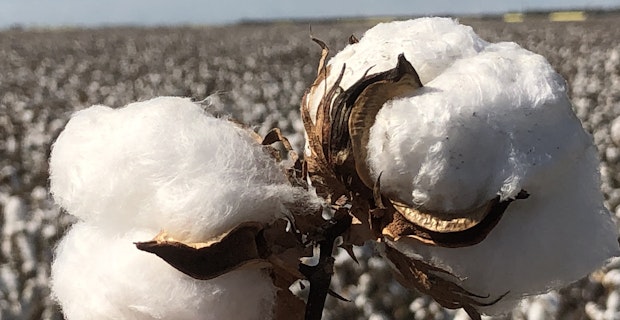First published in Cotton Farming Magazine
I am blessed to be a fourth-generation farmer and a second-generation California farmer. My parents, Ted and Deborah Sheely, moved to California from Arizona to farm cotton in California’s Central Valley in the 1970s. We are south of Fresno and receive less than 8 inches of annual rainfall. Farming in the land of fruits and nuts has its challenges as one of the most regulated farming geographies on the planet. We are served by water stored in the Sierra Nevada snowpack and state reservoirs. We also pump from wells when there is no water allocation to be had.
I grew up like most cotton farming kids. My first job was chopping weeds as a member of the “hoe crew.” From there, I graduated to moving handlines — aluminum sprinklers — from one irrigation set to the next. My dad called this job both motivation to go to college and a better workout than lifting weights. I also had a few short stints driving a water truck before attending Westmont, a liberal arts college where I studied biology, chemistry and music.

After graduation, I came back to the farm while continuing to study music and sing opera professionally. But I quickly learned I didn’t know much about the business of farming. However, I was lucky to get an internship during the Ag2020 project in California where NASA was disseminating technology to the private sector. Our farm was selected for many of the trials due to its early adoption of other technologies.
While in college, I was able to work on the project, which resulted in the first variable rate aerial application west of the Mississippi River. When I returned to the farm, I focused on irrigation. To add to the value of realtime information and trending water availability, we placed monitoring equipment in strategic areas of our field, using the same software I had used in the Ag2020 project. The probes showed that my dad and the other managers were really good at what they did and weren’t over or underwatering.

But we were likely not irrigating with enough frequency, and the duration was too long to maximize the value of our drip system. We needed to adopt another piece of technology to help control the irrigation valves and pumps. This shift in strategy resulted in reduced variability, a yield increase and cost reductions. It also meant I was able to add value to our management team.
When my focus shifted to software, I helped found a company to develop farming apps that allowed us to better manage the jobs on our farm and improve our team’s communication. Shortly after our first year, I was asked to speak at a conference for independent crop consultants and met one of the founders of Agworld. I joined the company in 2012 and now serve as president of the USA region.

Got what it takes to join the Agworld team? We’re looking for talented individuals to help us deliver innovative solutions in agriculture.
I love being able to serve other cotton farmers throughout the country. Our company wants to enable them to easily capture their farm information, get insights from data and work with others who provide advice or services on the same platform. I also still enjoy working with my dad and my brother, Jacob Sheely, on select farming decisions and business opportunities. But what I love most about growing cotton is that you get a new chance every year — unlike the permanent crops we grow. And producing fiber is particularly fulfilling when it involves projects where clothing can be traced back to our operation.
Farming is full of entrepreneurs and visionaries like my dad and brother. We continue to grow our team internally and leverage the value of other forward-thinking people and businesses. I’m excited about farming and how technology and digital platforms will enable growers to continue to innovate and provide food and fiber into the future.
Download Article



